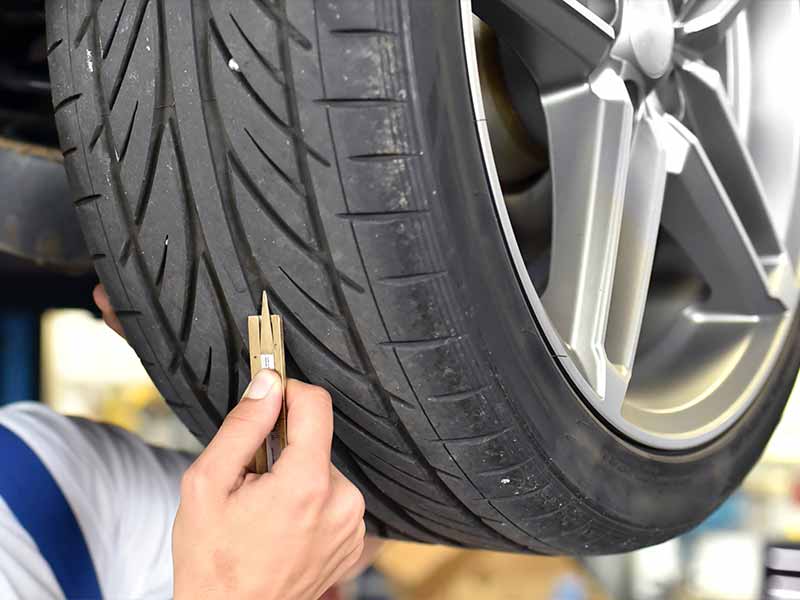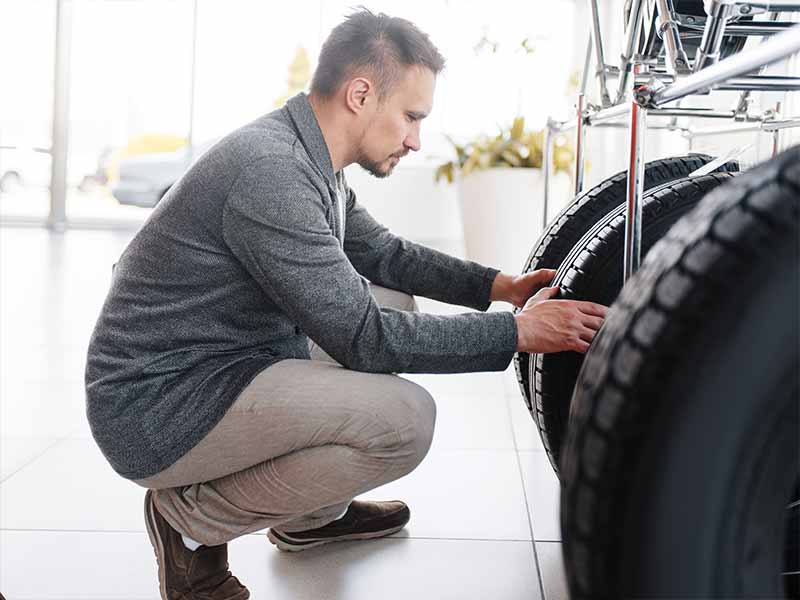Imagine you’re behind the wheel, ready to execute a perfect drift. The adrenaline is pumping, but so is a question in your mind: “What tires should I be using?”
Drift Tires Vs Regular Tires
Drift tires are designed for controlled sliding and rapid maneuverability in drifting, offering less durability but greater performance in specific conditions.
Regular tires are made for everyday road use, providing longer lifespan, stability, and versatility in various driving environments.
In this article, you’ll find detailed insights into the world of drift and regular tires. We’ll explore their composition, legal aspects, durability, impact on driving, and how to choose the right tires for your needs.

Characteristics of Drift Tires
Drifting, a driving technique where the driver intentionally oversteers, leads to loss of traction in the rear wheels while maintaining control. This demands a lot from the tires, so let’s explore how drift tires are up to the task.
Are Drift Tires Hard or Soft?
- Material Make-Up: Drift tires are generally made from a unique rubber compound that strikes a balance between hardness and softness. This composition is crucial for achieving the desired performance during drifting.
- Grip and Durability: They are designed to offer enough grip to initiate a drift while being hard enough to withstand the intense heat and friction generated during a drift.
Legal Aspects
- Regulations and Restrictions: The legality of drift tires on public roads varies depending on local laws and regulations. It’s important to be aware of these rules before fitting your vehicle with drift tires.
- Safety Considerations: While they are excellent for controlled environments like race tracks, their design might not be suitable for everyday road conditions. This is due to their specialized tread pattern and compound which may not offer the same level of safety and performance as regular tires in various road conditions.
Drift Tires and Vehicle Alignment
- Impact on Alignment: Drifting can significantly affect your car’s alignment, particularly the camber. Understanding what camber is and how it affects your vehicle is crucial for maintaining optimal performance.
- Alignment Maintenance: Regular checks and adjustments are essential to ensure your vehicle remains safe and performs well, especially if you frequently use drift tires.
Turning Traction Control Off: A Consideration
- When using drift tires, turning off traction control can enhance the drifting experience. However, it’s vital to understand the benefits and implications of turning traction control off, especially in relation to tire performance and vehicle handling.

Characteristics of Regular Tires
While regular tires might not be as thrilling as drift tires, understanding their design and purpose is key to appreciating their role in everyday driving.
Composition and Usage
- Material and Design: Regular tires are crafted with a balance that prioritizes longevity, fuel efficiency, and all-weather traction. They’re made to handle a variety of road conditions — from sunny streets to rainy highways.
- Tread Patterns: Unlike the specialized pattern of drift tires, regular tires feature tread designs that offer a stable ride, good water evacuation, and generally quieter road noise.
Legality and Safety
- Compliance with Road Laws: Regular tires are designed to comply with all road safety standards, making them universally legal for street use.
- Safety Features: They come equipped with features like sipes for wet traction and robust sidewalls for durability, ensuring a safe driving experience in most conditions.
Regular Tires vs. Drift Tires
- Performance in Everyday Conditions: While drift tires are built for the adrenaline rush of sliding around corners, regular tires are your reliable partner for daily commuting, offering comfort and safety.
- Versatility and Adaptability: Regular tires are the all-rounders, capable of performing well in a variety of scenarios, unlike the highly specialized drift tires.
Maintenance and Care
- Regular Check-Ups: To ensure your regular tires last longer and keep you safe on the road, routine maintenance like tire rotations, pressure checks, and alignments are key.
- Avoiding Drift Damage: It’s important to note that while regular tires can withstand normal wear and tear, they are not designed for drifting and can be damaged quickly under such extreme conditions.
Durability and Lifespan
Let’s dive into how long drift and regular tires last and what factors influence their longevity.
Drift Tires Lifespan
- Shorter Lifespan: Drift tires are known for their shorter lifespan due to the extreme conditions they endure. The intense friction and heat from drifting wear them down faster than regular tires.
- Factors Affecting Lifespan: The durability of drift tires depends on factors like driving style, drift technique, and the surface you’re drifting on. More aggressive styles lead to quicker wear.
Regular Tires Lifespan
- Longer Lifespan: Regular tires are engineered for longevity. With proper maintenance, they can last significantly longer than drift tires under normal driving conditions.
- Maintenance is Key: Regular tire rotations, maintaining proper tire pressure, and alignment checks are essential to maximize their lifespan.
Comparing Lifespans
- Drift vs. Regular: While drift tires offer a unique driving experience, they come at the cost of frequent replacements. In contrast, regular tires, with proper care, can serve you well for many miles.
Factors Influencing Tire Longevity
- Driving Habits: Aggressive driving can shorten the lifespan of any tire, not just drift tires.
- Road Conditions: Rough roads can lead to quicker wear of both drift and regular tires.
- Tire Quality: Investing in high-quality tires can mean a longer lifespan, whether for drifting or regular use.
Tips for Maximizing Tire Life
- Regular Inspections: Keeping an eye on tire wear and tear is essential for extending their life.
- Avoiding Excessive Drifting on Regular Tires: Drifting on regular tires not only shortens their lifespan but can also be unsafe.

Usage and Maintenance
Let’s take a look into the practical aspects of using and maintaining both drift and regular tires.
Drifting with Old Tires
- Reusing Old Tires: While it might be tempting to use old tires for drifting to save costs, it’s important to consider their condition. Compromised tire integrity can lead to safety risks and reduced performance.
- Assessing Suitability: Before using old tires for drifting, check for adequate tread depth, absence of sidewall damage, and overall tire health.
Impact of Drifting on Tires
- Accelerated Wear: Drifting exerts extreme stress on tires, leading to rapid wear. This is especially true for regular tires used in drifting, which are not designed for such conditions.
- Heat and Friction: The intense heat and friction generated during drifting can cause significant damage, reducing the lifespan of the tire drastically.
Choosing the Right Tires for Your Needs
- Drift Tires for Enthusiasts: If you’re serious about drifting, investing in specialized drift tires is wise for optimal performance and safety.
- Regular Tires for Daily Use: For everyday driving, regular tires offer the best balance of longevity, comfort, and safety.
Maintenance Tips
- Routine Checks: Regularly inspect your tires for signs of wear, air pressure, and damage.
- Professional Advice: If you’re unsure about the condition of your tires, especially after intense use like drifting, seek professional guidance.
Avoiding Unnecessary Strain
- Reserve Drifting for Appropriate Tires: Using regular tires for drifting not only shortens their life but can also lead to dangerous situations. Stick to drift tires for such activities.
- Balanced Driving Habits: Even with drift tires, balanced driving habits can help in extending their usable life.

Choosing the Right Tires for Drifting
We’ll guide you through what to look for in drift tires and how to make an informed decision.
Ideal Tires for Drifting
- Tire Compound: Look for a compound that offers a balance between grip and the ability to slide smoothly. Typically, a softer compound is preferred for its gripping capabilities.
- Tread Design: A tread pattern that’s conducive to drifting is essential. It should provide stability during a slide while allowing for controlled traction loss.
Practical Considerations
- Cost vs. Durability: Drift tires tend to wear out faster, so consider your budget in relation to how often you’ll need to replace them.
- Vehicle Compatibility: Ensure the tires you choose are compatible with your vehicle in terms of size and weight specifications.
Making the Right Choice
- Performance Needs: Assess your driving style and what you expect from your tires. Are you drifting for fun or competing? Your tires should match your performance needs.
- Safety First: Never compromise on safety. High-quality drift tires may cost more, but they offer better control and can handle the extreme conditions of drifting.
Maximizing Tire Performance
- Proper Installation: Have your drift tires professionally installed to ensure they’re correctly balanced and aligned.
- Regular Maintenance: Even drift tires require regular checks for air pressure, tread wear, and damage.
Resources
Below are some links you may find helpful when learning about tires:
- Understanding tire technology and its impact on performance – Car and Driver
- Guide to choosing the right tire for your car – Consumer Reports
- The science behind tire design and its influence on driving dynamics – Motor Trend
Final Thoughts
Drift tires offer a specialized experience for those passionate about motorsports, particularly drifting, while regular tires are the go-to choice for everyday driving, providing safety, longevity, and stability in a variety of conditions.
Remember, the key to maximizing tire performance lies in understanding their distinct characteristics, proper maintenance, and using them in the appropriate contexts.
So, whether you’re burning rubber on the track or cruising down the highway, make sure your tires are the right fit for your journey.
Good luck and happy motoring.





